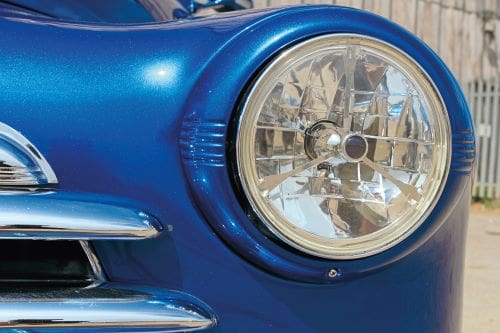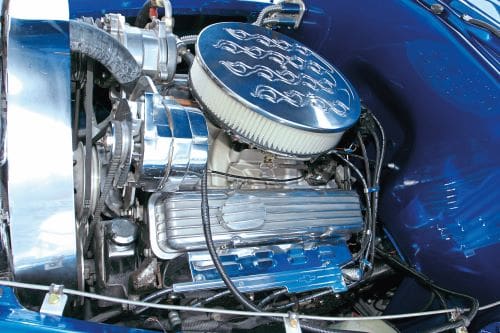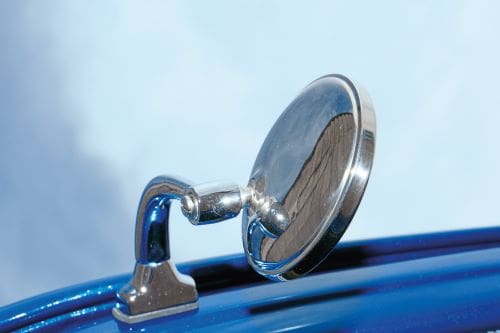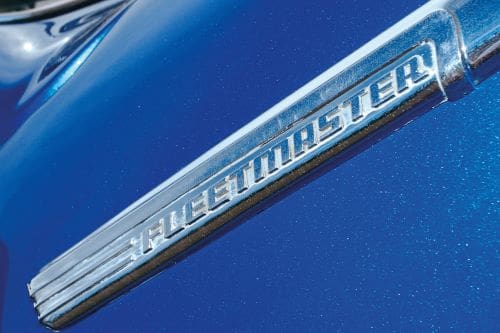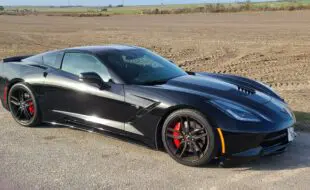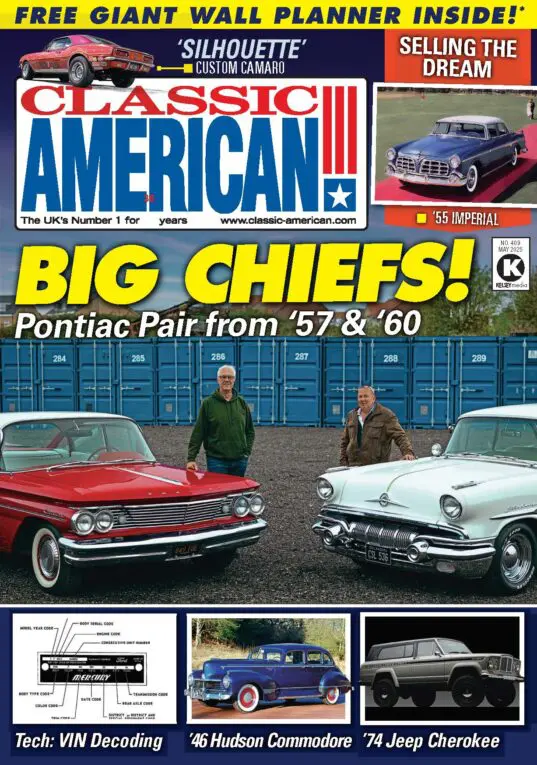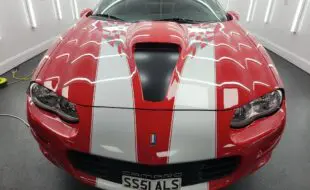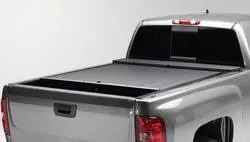With his ’48 Chevy Fleetmaster Sport Coupe, Kevin Boniface has certainly achieved what we all aspire to own – an eye-catching, reliable and safe car to enjoy and drive.
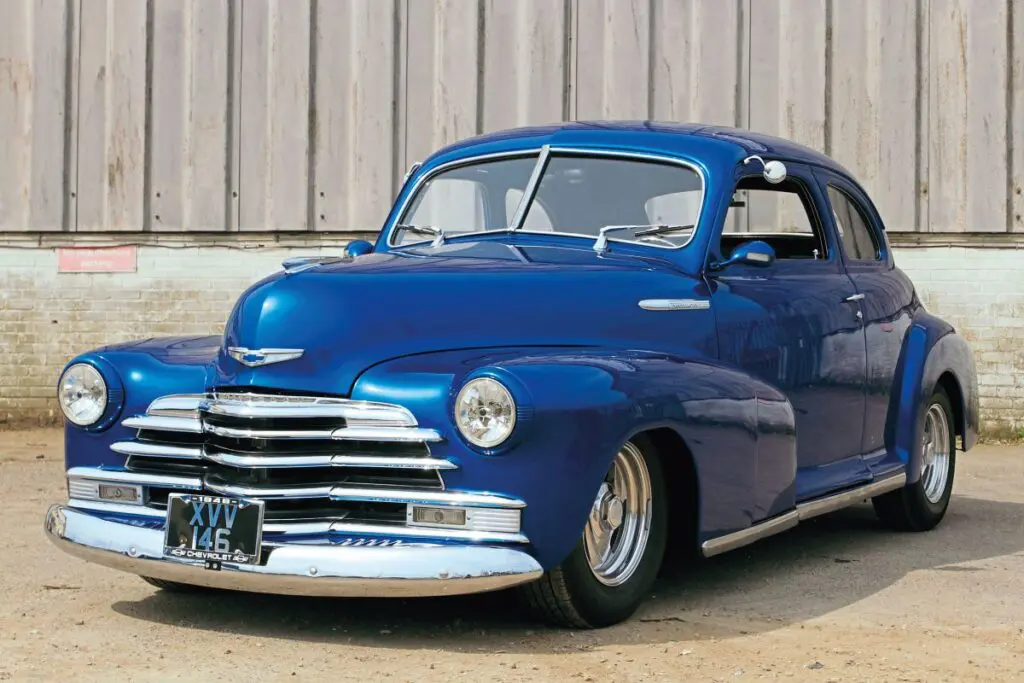
Words: Keith Harman Photography: Paul Trunfull
This sharp-looking ’48 Chevy Fleetmaster Sport Coupe is a rare model in the UK, either stock or tastefully rodded as this one is, and this feature sees a welcome return to these pages for its owner, Kevin Boniface of Seaford, East Sussex. While gathering up the info on his latest ‘Bowtie’ he reminded us that his modified ’57 Chevy, which he still owns, was a previous feature car in CA around 10 years ago and, with a supercharged Pontiac Trans Am preceding that, it’s safe to say Kevin likes his cars with a hot-rod flavour.
Enjoy more Classic American reading in the monthly magazine.
Click here to subscribe & save.
Having since retired in the last few years, and with the ’57 needing nothing more, Kevin decided to look around for something else interesting and found this ’48 for sale over in Florida. It had already been rebuilt into a comfortable, driving street rod by the previous owner and was now being offered by the Tampa branch of Streetside Classics. This was back in 2017, and the car was quickly shipped over to Southampton by Golden Chariots (www.goldenchariots.com/tel. 01902 790797). Kevin speaks very highly of the service which he received from the company.
Unlike some imported modified cars that we get to hear about, the Chevy had been built well, and drove well too, needing no immediate work apart from having a working handbrake installed − a job which Kevin carried out himself using a modified ’57 Chevy kit, as nothing was available for the ’48. While he was under there, Kevin also elected to fit a set of GAZ adjustable rear shocks, which was a relatively straightforward job with just the axle brackets requiring modification.
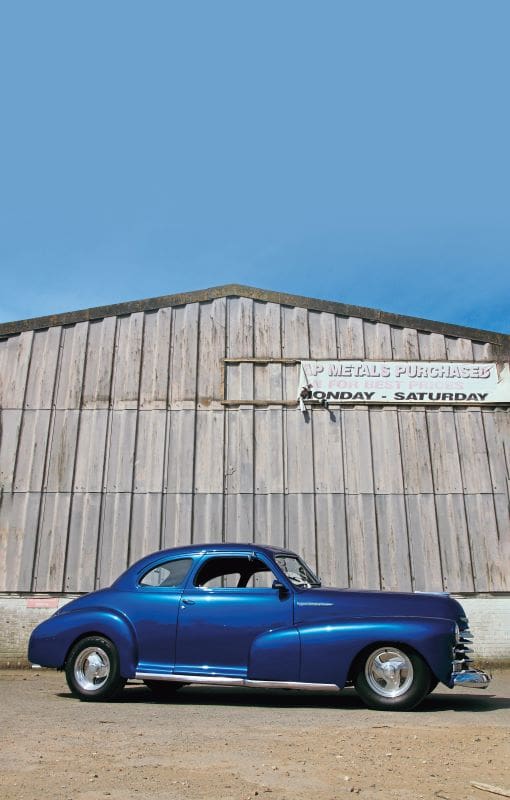
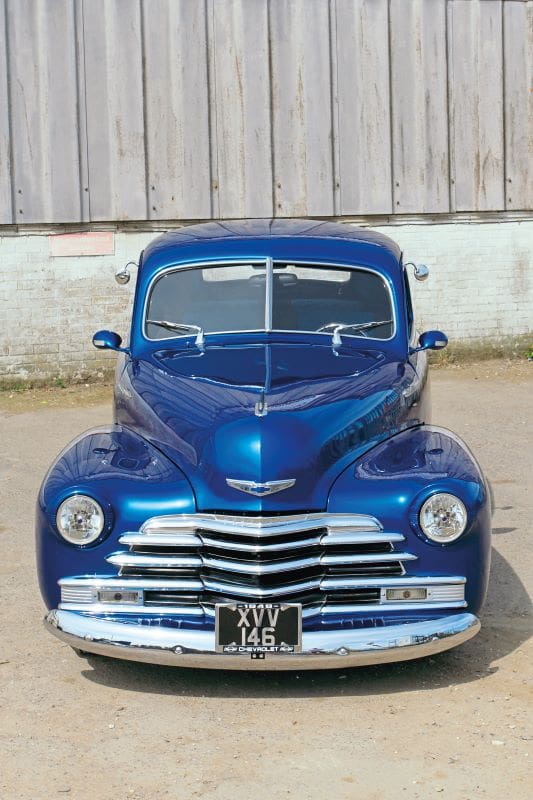
Chevrolet’s post-war Fleetmaster range was introduced in 1946, and ran relatively unchanged until 1948, encompassing all the body styles available that year. These included two- and four-door sedans, a four-door wagon, a convertible, and just the one two-door Sport Coupe model, like this one. They were all powered by the same 216 cubic inch straight-six motor, with a three-speed column change gearbox. All of them featured the attractive, wide chrome horizontal grille, but otherwise the external body trim was quite restrained, leaving the curvy lines smooth and uncluttered.
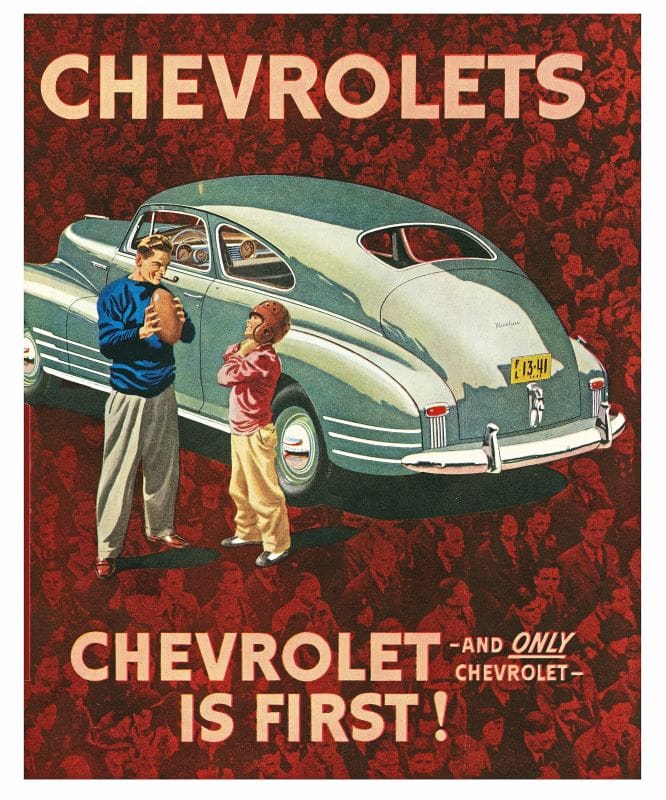
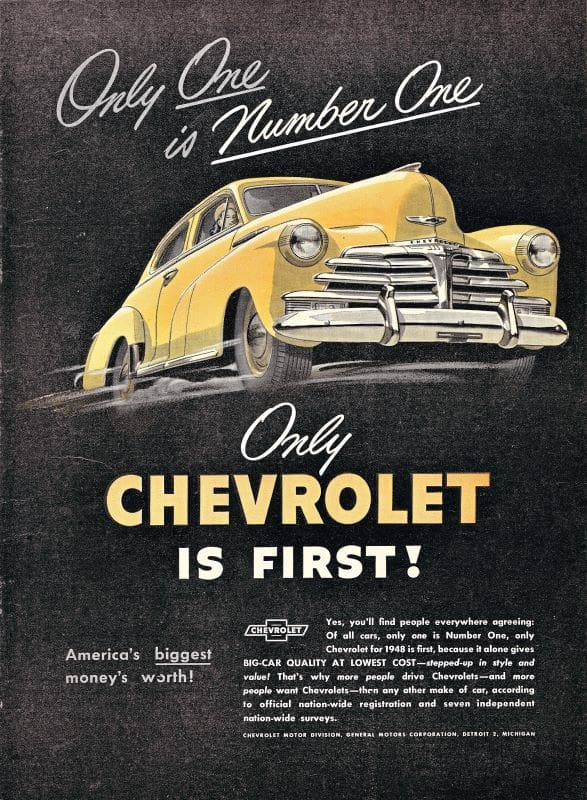
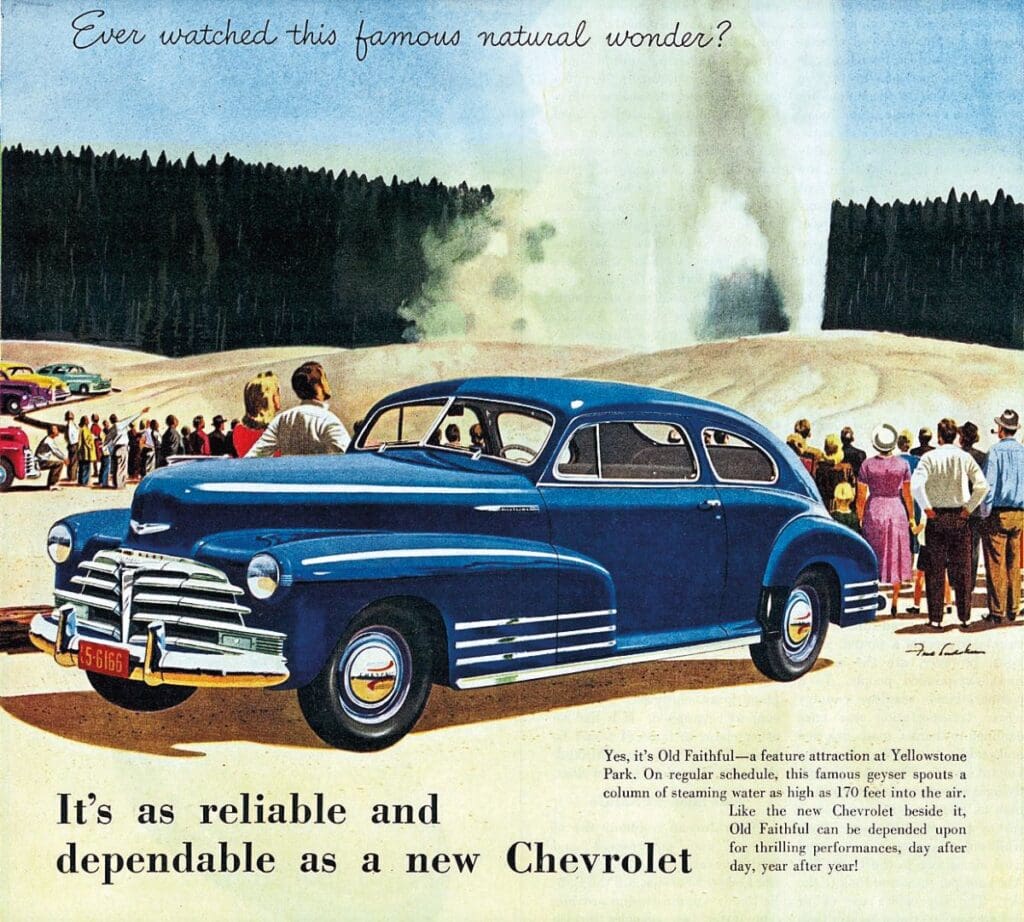
Kevin’s ’48 retains an almost 100% original body; the only modifications to the metal being the installation of a flush-fit, pop-up, fuel filler from a Harley-Davidson in the offside rear fender. The rear apron has also been smoothed and filled for a sleeker look since the Chevy no longer runs a rear bumper. It did however require repairs to the rears of both front fenders before its respray, the necessary metalwork being carried out by Kevin’s son, Darren.
When imported, it was found to have had a poor attempt at recessing the rear licence plate into the trunk lid, so this was also rectified, with Kevin locating an original chrome trunk lid handle and licence plate lamp. Keen eyes will also notice that the profile of the car has been enhanced with the deletion of the quarter vent windows in the front doors, a common enough update on American-built rods, especially if hard-to-find quarter light parts are required.
The ’48 was already blue when imported, but following the various bodywork tasks the whole car was treated to a respray in Chevrolet’s 2017 shade, Kinetic Blue, ably carried out locally by Custom Coachworx of Eastbourne (tel. 01323 469386). On completion, the car received a full set of new tinted glass all round and, since the stock glass was all flat, the new laminated glass was easily cut using the old ones as templates. Also note, the headlamp bezels are now colour-matched, instead of chrome.
Although the ’48 was purchased from the dealer in Tampa, the company has several dealerships around the country and Kevin believes it was transferred down to the Sunshine State to sell as documents show that the car was built into a rod in Ohio. The car seems to have been updated to its later running gear using a ’75 Chevy Camaro as a donor car. Certainly the 350 V8 engine dates it as such, and the inclusion of a 10-bolt rear axle and a late model GM steering column indicate they likely came from the same source − a relatively inexpensive way to source the heavy hardware, especially when building a full-bodied post-war rod.
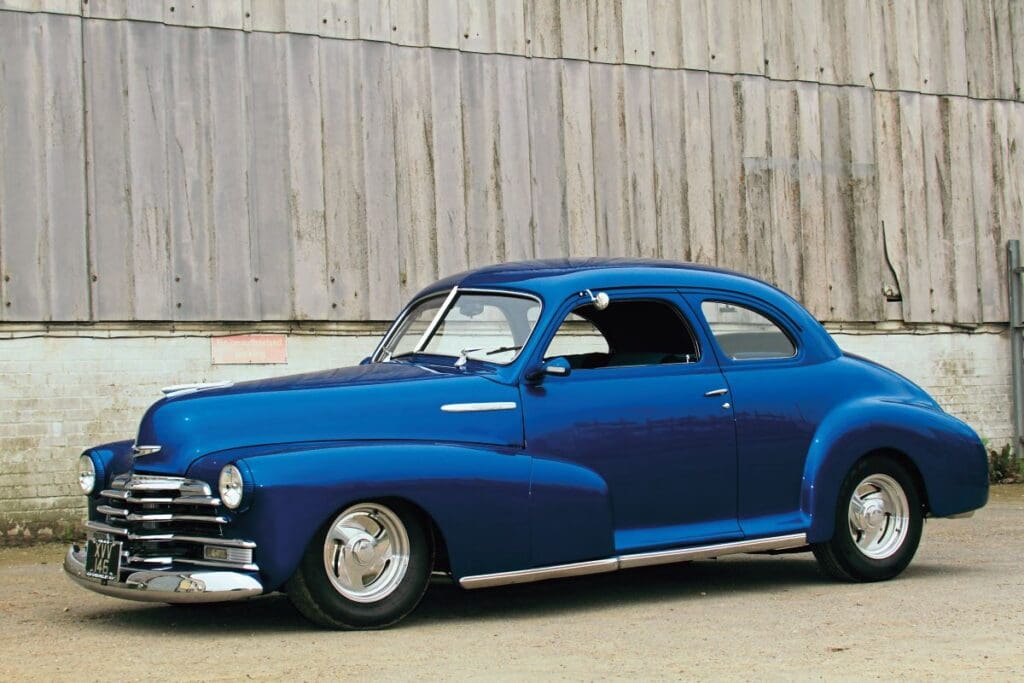
The 350 remains stock internally, with a Weiand alloy inlet manifold and 600 cfm Holley replacing the stock cast iron inlet and Quadrajet carb. The engine is fully dressed with finned valve covers, louvred chrome header covers, and a billet, flamed, air cleaner. A full set of billet alloy pulleys are also used to help run the chrome alternator and aftermarket air-conditioning pump, with a Vintage Air air-conditioning unit being installed under the dash. A stock TH 350 transmission provides the effortless shifting when on the move.
So far, the ’48 lists all GM products in the build, but up front, the suspension and steering is taken care of via the tried-and-tested formula of an aftermarket independent suspension kit based on the Mustang II design. These kits have been popular street-rod upgrades for vintage cars and trucks for many years now − they are an ideal width for older vehicles and can be ordered with disc brakes and power steering racks, plus they provide that all-important lowered hot-rod stance without compromising drivability on modern roads.
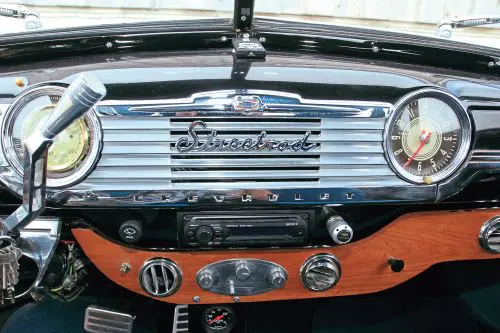
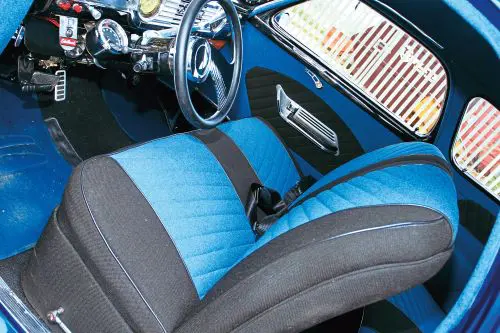
The interior of the Chevy was already tastefully trimmed in blue and black cloth which matched the exterior, so Kevin saw no reason to change it, especially as it shows no obvious signs of wear and tear at all. Aftermarket door armrests have been added and these include the switches for the electric windows. Thankfully, the dash still features the impressive Art Deco-style chrome panel which houses the speedo and large clock − an attractive feature on these Chevys. A separate panel has been mounted beneath to house the air-conditioning controls and vents, a billet aluminium shifter lever now replaces the old GM lever on the steering column and a polished Billet Specialties steering wheel completes the theme.
Billet alloy wheels feature a unique three-blade design from Weld Racing; they’re 15 x 7 front and back and are wrapped in Goodyear rubber; 70 Series profile on the back and 65s on the front. While the use of billet aluminium parts and accessories was at its most popular during the late Eighties and Nineties on street rods and custom vehicles, Kevin’s car proves that if used tastefully against a classy single colour paint scheme, it still has its place and its fans, despite the recent shift to more traditionally styled cars in recent years. At the end of the day, we all aspire to owning eye-catching, reliable and safe cars to enjoy and drive, and Kevin has certainly achieved that with his classy ’48 Sport Coupe.
